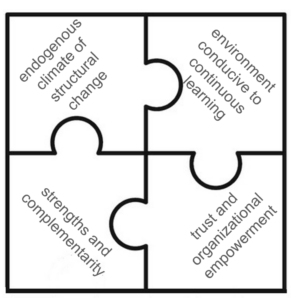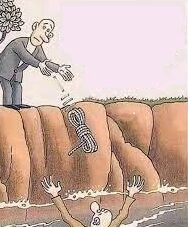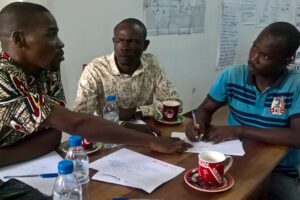BOOST : Building On Our Strengths Together
Capacity strengthening is not a linear process. Moreover, there is no single way to strengthen capacity. It is rather a process of exchanges, reciprocity and continuous proxy-monitoring.
So that our trainings and mentorship leads to practical application and thus the creation of a real climate of change,
BOOST is built on some specific methods
BOOST : A FLEXIBLE PROGRAM ADAPTED TO THE CONTEXT
BOOST confirms that it is not possible to apply the ‘plug and play' or ‘ one fits all' principle in fragile contexts. An effective and efficient capacity building program could only be implemented when it is adapted to the capacity and resources, interest and objectives, needs and availability of each local actor. This requires the time necessary to appropriate the learning process and integrate it into daily functioning.
Capacity strengthening requires a contextualized approach adapted to the diversity and specificities of local actors.

CERAR has developed BOOST, an alternative methodology for strengthening structural and organizational capacities that allows the initiation of a climate of structural change and continuous learning.
BOOST invests in :
- the creation of an endogenous climate of structural change
- trust and organizational empowerment
- an environment conducive to continuous learning,
integrated into daily practices and responsibilities - an approach based on strengths and complementarity
This requires a variety of tools and methods, a flexible and contextualized approach, appropriate support and long-term investment.

BOOST : SPECIFIC APPROACHES
an approach based on learning by doing
An organization learns more and takes ownership of learning more easily if this experience is acquired through practice (“doing”) and combined with proximity mentoring.
Three conditions are necessary to apply this method :
- a space and attitude of experimentation including a safety net (right to make mistakes, joint search for alternatives, reduction of fear of failure and abandonment, respect for each one's pace and time)
- a clear framework and awareness of the process (regular reminder of the framework, updating of the process and objectives)
- an explicit capitalization of learning.
a holistic approach
Capacity strengthening is not a one-way accumulation of activities (top down), but rather a process of exchanges and creation of an enabling environment considering the context and the different levels in the association. (For example, it is not enough to train an accountant in a new accounting tool to be financially credible. It is necessary to integrate it in a system of financial management and in a culture of financial accountability).
an approach integrating 3 levels
BOOST develops capacity strengthening at three levels: the staff level (by strengthening the individual capacities of the different members of an association), the structural level (by setting up structures and organizational development within the association ) and the systemic level (by strengthening certain aspects of organizational culture and working on behaviors and mentalities while respecting the specificities of each association).
 an approach based on strengths and experiences of success
an approach based on strengths and experiences of success
BOOST takes specificities, experiences, knowledge, good practices and needs, rather than deficits, as a starting point.
an approach respecting the pace of participants
Local actors need time, space and support to experiment, familiarize themselves and take ownership of their learning process.
a participatory approach based on complementarity
The intention is not for each organization to become a copy of the others, but rather to develop according to its vision and mission and its specificities, in order to be complementary with others.
BOOST : THE FOUNDATIONS
BOOST combines several approaches in an innovative way :
the 'small change' theory
CERAR values each change made or experience of success to encourage teams and promote self-confidence.
the spider web theory
Changing everything at once is impossible. This is why CERAR applies the spider web theory. When you move a spider web by choosing 3 pivotal points, the rest of the web automatically follows. Likewise, CERAR determines and works on 3 key priorities - "pivotal changes" - at a time, so that changes occur systematically on other elements of the strengthening process.
the active integration of local experiences and knowledge
BOOST integrates proactively professional or lived experiences and knowledge of associations, , to value and capitalize their organic and specific potential.
the approach through pivotal changes
To avoid overload and the risk of tearing the associative fabric, putting too much pressure and making ownership of the process impossible, CERAR limits the areas of change to three at a time (per cycle).
This allows that the process of change and learning become realistic and feasible with available resources, manageable by the very associations.
peer-to-peer learning
BOOST invests in peer-to-peer learning and Training of Trainers - appropriate means for better contextualization and ownership and to achieve lasting impact. A local team is formed to increase learning through co-animation, co-facilitation, sharing of testimonies and experiences.
BOOST : A GRADUAL AND PROGESIVE PROCESS


